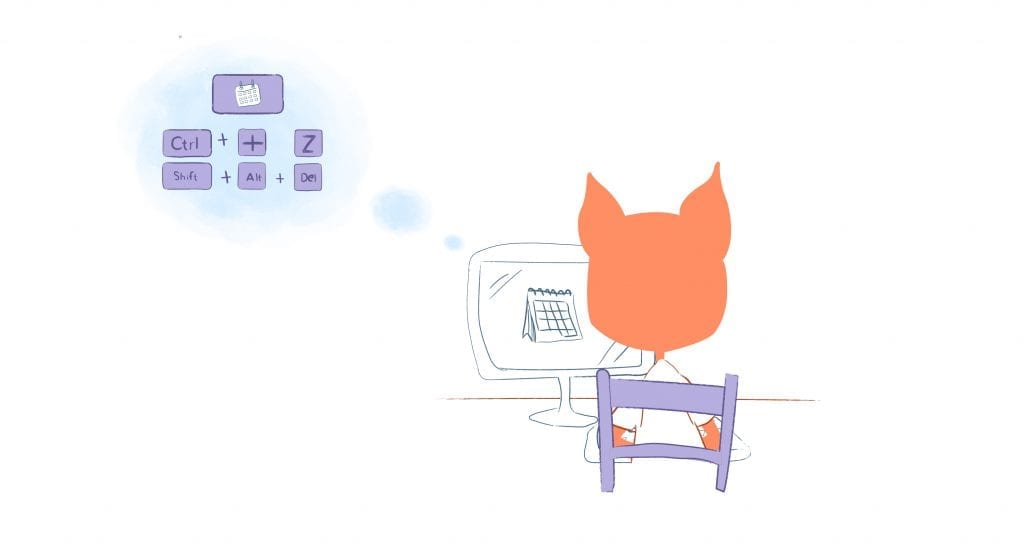
You wake-up every morning and launch into your routine, like exercising and reading. As your routine winds down you glance at your calendar to do list. Your relaxing and productive morning is over. And before your day has gotten started you’re already frustrated.
Most of of us have to-do-list. And there’s a good reason for that. To-do-lists provide clarity on what needs to get done, prioritizes your actions, assists with planning, and can make you feel more organized.
Unfortunately, the most successful and productive individuals don’t rely on to-do-lists. Instead, they let their calendar own them.
Calendar to do lists don’t work.
As noted above, there are some advantages with to-do-lists. However, most people eventually get overwhelmed and frustrated with their to-do-lists. That’s because we’re constantly looking at everything that needs to get done. What’s more, we’re constantly adding items to our lists, but we aren’t reducing them. And, most of us aren’t exactly sure on how to prioritize the items on the list.
But — that’s just scratching the surface.
- To-do-lists don’t account for time. When there’s a lengthy list in front of us we tend to cross-off the items that can be done quickly. This leaves those more challenging tasks undone. No wonder 41 percent of to-do list items are never completed.
- The paradox of choice. Barry Schwartz has found that when as the amount of choices increase, so do negative emotions. This is due to an increase of opportunity cost. Sheena Iyengar discovered that our brains are only capable of handling seven before before getting overwhelmed.
- Heterogeneous priority. Most to-do-lists contain items of varying priorities. This means we tend to take care of “A” priorities and neglect “C” priorities. For example, maintaining your vehicle is often a “C” priority — until it breaks down. But, if it was an “A” priority this would decrease the chance that it would break down. In other words, they don’t distinguish between what’s urgent and important.
- The Zeigarnik effect. In psychology this is a phenomenon where we remember incomplete tasks more than those that have been completed. As a result, we have more uncontrolled thoughts over those unfinished tasks. This explains why you wake-up in the middle of the night worrying if you responded to an email or turned off the stove. This leads to stress and even health conditions like heart disease and insomnia.
- Lack of commitment devices. This is something that you put into place so that you’ll follow through on an action. For example, signing up for an annual gym membership instead of a day pass. Or leaving work at the office so you can’t spend time on it at home. To-do-lists don’t help you distinguish between prioritizing pleasant tasks over important tasks.
Calendar — not to-do lists.
Kevin Kruse has interviewed more than 200 billionaires, entrepreneurs, Olympians, and straight-A students regarding productivity and time management. “In all my research, there is one consistent theme that keeps coming up,” Kruse writes in Forbes. “Ultra-productive people don’t work from a to-do list, but they do live and work from their calendar.”
“If it’s not in my calendar, it won’t get done. But if it is in my calendar, it will get done,” entrepreneur and New York Times bestselling author Dave Kerpen told Kruse. Fellow entrepreneur Chris Ducker echoed that sentiment.
“I simply put everything on my schedule. That’s it. Everything I do on a day-to-day basis gets put on my schedule. 30-minutes of social media–on the schedule. 45-minutes of email management — on the schedule. Catching up with my virtual team–on the schedule…Bottom line, if it doesn’t get scheduled it doesn’t get done.”
This actually makes a lot of sense. After all, our lives are dictated by time. Deadlines, appointments, travel estimates, and how long something you ordered online will arrive. They’re all units of time that make-up our lives.
When we focus on time, as opposed to tasks, we’re able to replace those ineffective to-do-lists with a calendar. Once you do, you’ll be able to tap into the power of one focused hour a day because calendars make time central.
In other words, because time is finite we’re more motivated not to waste it. Whether if it’s meetings, to-do’s, or reminders, when they’re in your calendar they have more value. Because they’re valuable and deserving of your time, you’ll be more likely to stay on top of them.
Here’s a couple of other reasons why calendars are more effective than to-do-lists.
- Calendars can change your behavior. If you want to start developing healthy habits your calendar can achieve that. For example, if you want to read or exercise for 30-minutes a day adding those to your calendar will make you more consistent. It’s like Jerry Seinfeld’s productivity secret. Whenever you complete a desired action you cross that day off your calendar. Eventually you have a chain and become motivated not to break it.
- You can use you calendar to accomplish goals. It’s one thing to jot down that you want to expand your business or lose weight this. It’s another to be specific and have deadlines. If you want to acquire 10 new customers then you would set a deadline for each task needed to reach that goal in your calendar.
- Your calendar is better at helping you remember tasks and reminders. Instead of remembering a million tasks and reminders your online calendar can remind you of these items, such as when you’re meeting with a client or when a bill is due. It’s an effective way to keep you on-track.
- Calendars make scheduling a breeze. Let’s say that you include “Meet with Tom” in your to-do-list. You still have to contact Tom and then exchange communications until everyone agrees on a date and time. If you shared with him your calendar Tom could see your availability and pick a date and time that works for him.
Turning your to-do list into a Calendar.
Are you ready for your calendar to start owning your to-do-lists? Here’s a couple of pointers in getting started.
First — you want to identity and schedule your priorities. Allison Rimm, a management consultant, speaker, and executive coach, suggests that you begin “by looking at what’s already on your to-do list.”
Then, “Ask yourself how each task does or does not contribute to accomplishing your goals — your vision of success. Does it really need to be done?” If this is a priority, does it even have to be done by you?
“If the answer to either of those is no, these items can be ditched or delegated and come off your list.”
“Next, create your not-to-do list. Once you accept that you have more to do than time to do it all, that is actually a liberating concept. This realization forces you to acknowledge there are lower priority items that you will likely never complete,” adds Rimm. “Delete those non-essentials, put them on your not-to-do list, and commit to letting them go.”
When new tasks pop-up determine if they meet your criteria for inclusion or not. After “your list is pruned and prioritized, estimate how long you expect each task will take to complete.”
This will take some trial and error, but the idea is that when you have a series of blocks throughout the day you can get more done. It’s suggested that you use 15 or 30 minute blocks instead of the default 60 minutes in your calendar.
To ensure that you get the most out of each block, batch similar tasks together. As Amanda Abella explained in a previous Calendar article, “Batching is a form of productivity where you arrange tasks in set groups.
In other words, you block off time on the calendar for similar tasks.” This prevents multitasking, provides structure, reduces stress, and guarantees that you get more done. Just remember that you time-block the most important things in your life first. After that, go ahead and schedule everything so that they actually get done.











Howie Jones
My name is Howie and I'm a Customer Success Manager at Calendar. I like to ensure our customers get the best experience using our product. If you have questions email me howie at calendar.com